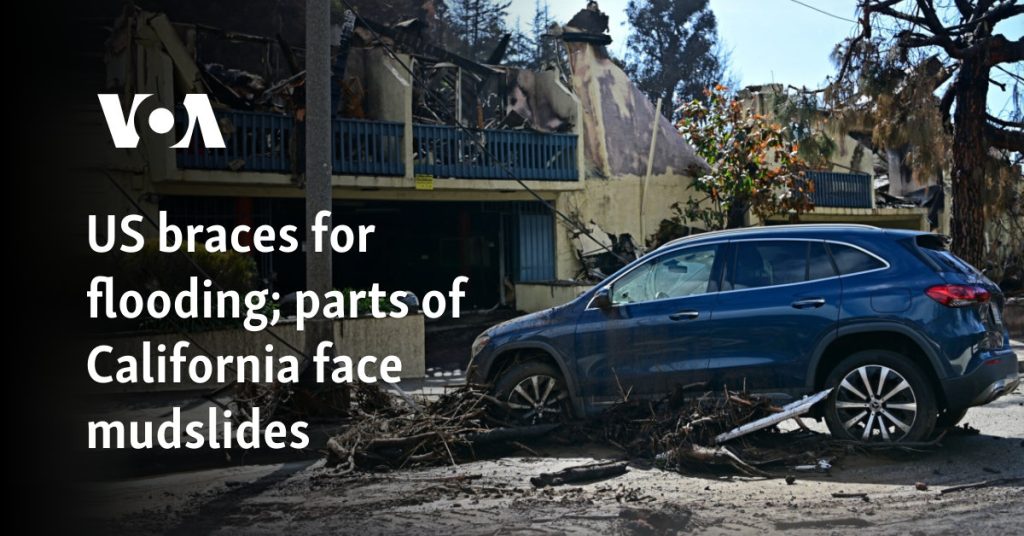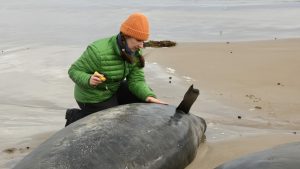
Much of the Eastern United States braced for a renewed round of harsh, soggy weather Saturday, with thunderstorms and melting snow combining to pound the Ohio and Tennessee valleys. The lower Mississippi valley was facing the threat of strong tornadoes.
Kentucky, Tennessee, West Virginia and Arkansas were under flood warnings, and residents were warned by the National Weather Service to stay off roads. Parts of western Kentucky could face up to eight inches of rain.
“This may be a major, potentially historic, flash flood event,” the NWS said.
Heavy snow, meanwhile, was expected to blanket much of New England and then transition to sleet, making travel nearly impossible, the NWS said.
In northern New York, heavy mixed precipitation is expected throughout the weekend. Weather forecasters said residents should expect snow, sleet and ice accumulations of six to 13 inches and wind gusts as high as 72 kilometers per hour (45 miles per hour) late Saturday and Sunday.
“Power outages and tree damage are likely due to the ice and strong winds. Travel could be very difficult to nearly impossible, the NWS said.
California struggles with mudslides
In Southern California on Friday, a mountain community near the Eaton Fire burn scar dug out of roads submerged in sludge after the strongest storm of the year swept through the area, unleashing debris flows and muddy messes in several neighborhoods recently torched by wildfires.
Dry weather returned to the region but the risk of rock and mudslides on wildfire-scarred hillsides continued Friday since dangerous slides can strike even after rain stops, particularly in scorched areas where vegetation that helps keep soil anchored has burned away.
Water, debris and boulders rushed down the mountain in the city of Sierra Madre on Thursday night, trapping at least one car in the mud and damaging several home garages with mud and debris. Bulldozers on Friday were cleaning up the mud-covered streets in the city of 10,000 people.
Sierra Madre officials issued evacuation orders for areas affected by the Eaton Fire, warning that fire, police and public works personnel would not enter areas experiencing active mud and debris flows and anyone who remained in a home under evacuation orders would need to shelter in place until areas are deemed safe for city personnel to enter. Residents of the city also had to evacuate during the Eaton Fire, which destroyed 15 homes in the community.
In Pacific Palisades on Friday, some residents washed their mud-covered driveways and bulldozers worked to clear mud-coated roads not far from where, just weeks ago, officials moved abandoned cars after people fleeing last month’s wildfires got stuck in traffic and fled on foot.
Southern California reported 2.5 to 7 centimeters (1 to 3 inches) of rain in coastal areas and valleys and 7.6 to 15.2 centimeters (3 to 6 inches) across the coastal slopes Thursday, said Mike Wofford, a meteorologist with the weather service.
The precipitation was badly needed, as much of Southern California remains in extreme or severe drought, according to the U.S. Drought Monitor. In neighboring Nevada, the weather service said it recorded a measurable amount of rain in Las Vegas, ending a streak of 214 days without precipitation.
A storm in the Sierra Nevada mountains dumped 1.8 meters (6 feet) of snow over 36 hours. Two ski patrol staff from Mammoth Mountain were caught in an avalanche during avalanche mitigation work Friday morning, the resort said in a Facebook post. One was extracted and was responsive, while the other was taken to a hospital with serious injuries.
More winter weather descending
Meteorologists warn that the U.S. is about to get its 10th and coldest polar vortex stretching event this season. Weather forces in the Arctic are combining to push the chilly air that usually stays near the North Pole into the U.S. and Europe. The latest projected cold outbreak should first hit the northern Rockies and northern Plains on Saturday and then stick around all next week.
In Denver, Colorado, where temperatures are expected to dip as low as minus 10 degrees Celsius (14 degrees Fahrenheit) over the weekend, the city has extended its cold weather shelters for those living on the streets. The Denver Coliseum — an arena with some 10,000 seats — will be opened Saturday for additional space, while a free bus will loop between the shelters across the city.








